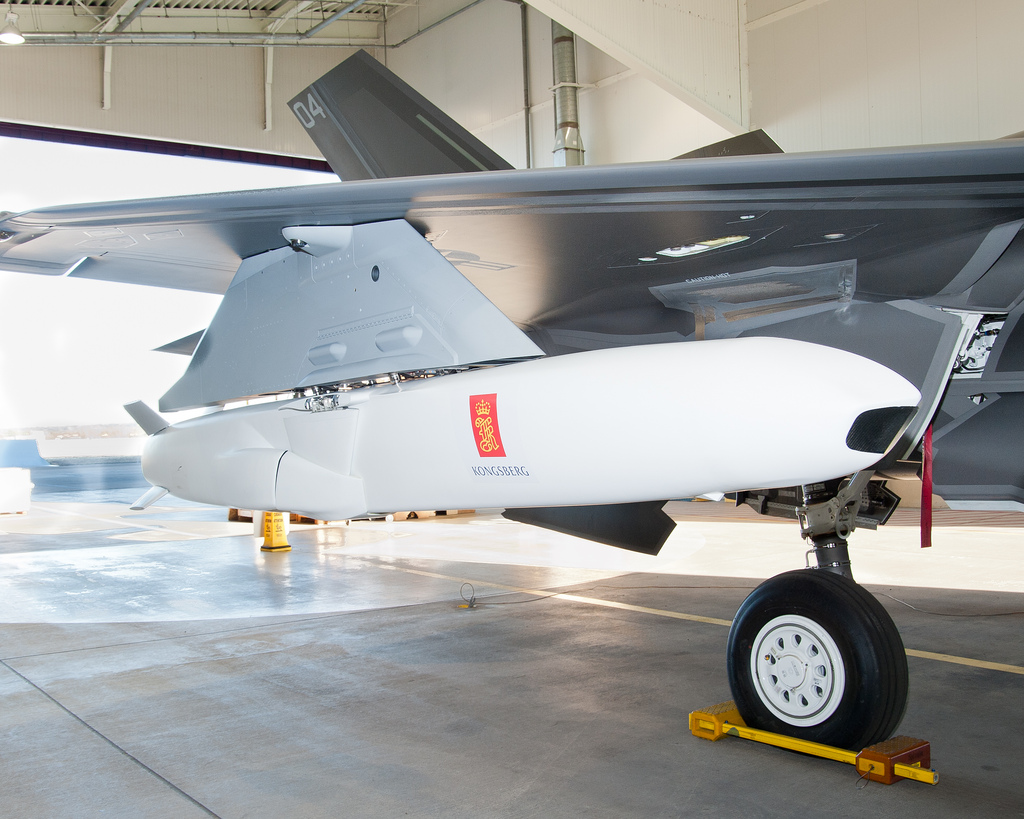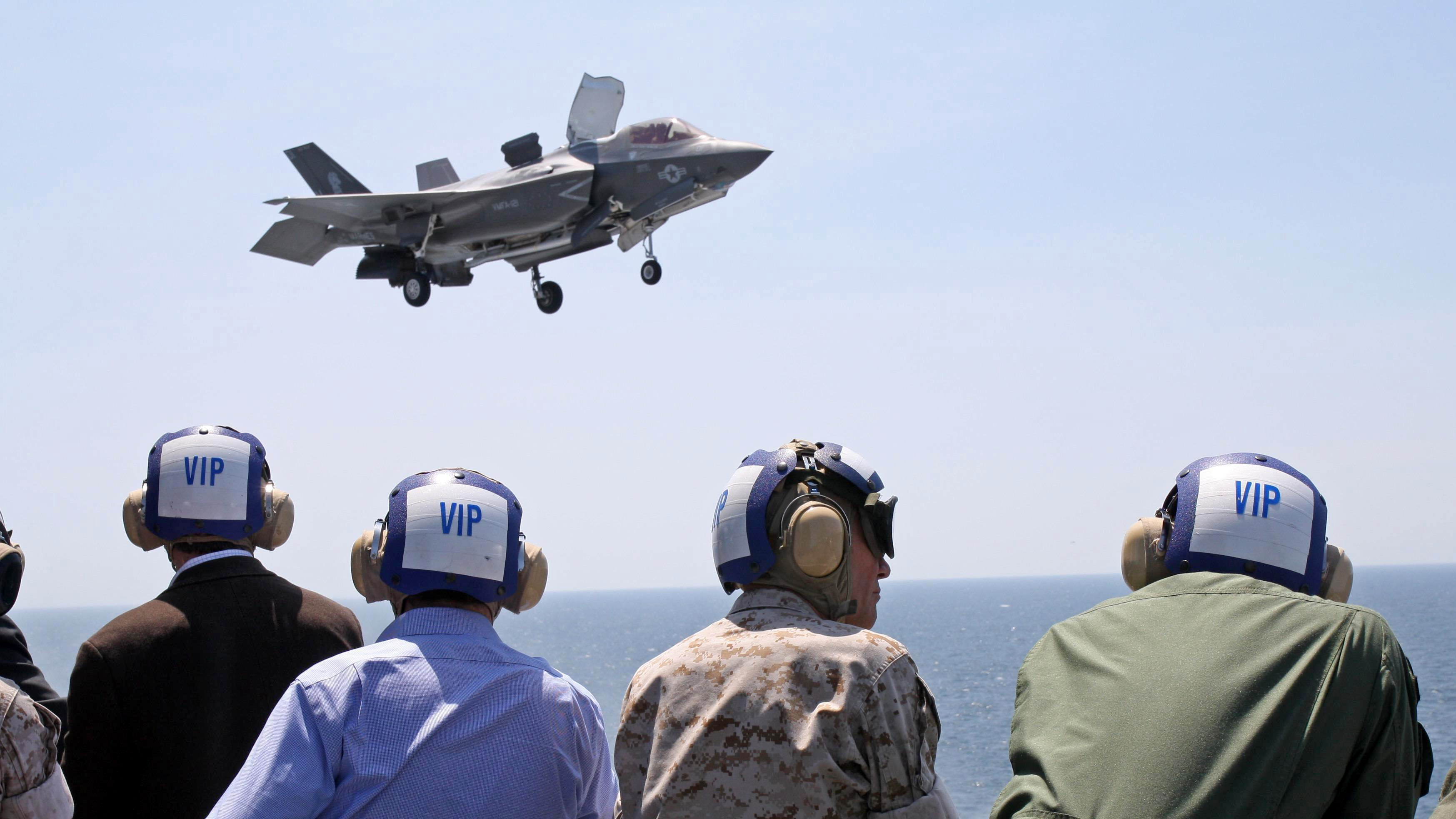500
BANNED

- Joined
- Aug 18, 2010
- Messages
- 16,678
- Reaction score
- 38
- Country
- Location
U.S. Marines declare initial F-35 squadron ready for combat: sources
By Andrea Shalal
WASHINGTON (Reuters) - U.S. Marine Corps Commandant General Joseph Dunford has declared an initial squadron of 10 Lockheed Martin Corp F-35B fighter jets ready for combat, sources familiar with the decision said on Friday.
The decision, to be announced formally later Friday, is a key milestone for the $391 billion F-35 program after years of cost overruns and schedule delays. It also makes the Marines to first U.S. military service to declare an "initial operational capability" of the F-35.
The three models of the plane have been in development since 2001.
The F-35B model of the aircraft can take off from shorter runways and land like a helicopter.
Deputy Commandant for Aviation Lieutenant General Jon Davis told reporters on Monday that the squadron met all the requirements for the declaration during a recent review, and a decision was expected soon.
Dunford's nomination to become the next chairman of the Joint Chiefs of Staff was approved this week.
The Marine Corps plans to send the first squadron of operational F-35B jets to Iwakuni, Japan, in January 2017, but Dunford's declaration means they could respond to a crisis anywhere in the world.
Davis said the jets performed well during an operational readiness review, both in targeting and "killing" enemy aircraft and providing close air support for troops on the ground.
He said the pilots were even able to carry out an armed reconnaissance mission in a "very high threat" environment to which older fourth-generation fighter jets like the Boeing Co F/A-18 and AV-8B Harrier had not been subjected.
The Marine Corps opted to start using the F-35B jets with an early version of software called Block 2B. Software still being tested will allow the new warplanes to carry more weapons, including a gun, and integrate full night-vision capability.
No comment was immediately available from a Marine Corps spokesman or the Pentagon's F-35 program office.
The Marine Corps plans to buy a total of 420 F-35 B-model and C-model jets.
Admiral John Richardson, President Barack Obama's nominee for chief of naval operations, told lawmakers in prepared answers to questions on Thursday that he planned to take a hard look at the Navy's plans to buy 340 F-35 C-model fighter jets, which have longer wings and can land on aircraft carriers.
(Reporting by Andrea Shalal; Editing by Alden Bentley and Lisa Von Ahn)
U.S. Marines declare initial F-35 squadron ready for combat: sources - Yahoo News


By Andrea Shalal
WASHINGTON (Reuters) - U.S. Marine Corps Commandant General Joseph Dunford has declared an initial squadron of 10 Lockheed Martin Corp F-35B fighter jets ready for combat, sources familiar with the decision said on Friday.
The decision, to be announced formally later Friday, is a key milestone for the $391 billion F-35 program after years of cost overruns and schedule delays. It also makes the Marines to first U.S. military service to declare an "initial operational capability" of the F-35.
The three models of the plane have been in development since 2001.
The F-35B model of the aircraft can take off from shorter runways and land like a helicopter.
Deputy Commandant for Aviation Lieutenant General Jon Davis told reporters on Monday that the squadron met all the requirements for the declaration during a recent review, and a decision was expected soon.
Dunford's nomination to become the next chairman of the Joint Chiefs of Staff was approved this week.
The Marine Corps plans to send the first squadron of operational F-35B jets to Iwakuni, Japan, in January 2017, but Dunford's declaration means they could respond to a crisis anywhere in the world.
Davis said the jets performed well during an operational readiness review, both in targeting and "killing" enemy aircraft and providing close air support for troops on the ground.
He said the pilots were even able to carry out an armed reconnaissance mission in a "very high threat" environment to which older fourth-generation fighter jets like the Boeing Co F/A-18 and AV-8B Harrier had not been subjected.
The Marine Corps opted to start using the F-35B jets with an early version of software called Block 2B. Software still being tested will allow the new warplanes to carry more weapons, including a gun, and integrate full night-vision capability.
No comment was immediately available from a Marine Corps spokesman or the Pentagon's F-35 program office.
The Marine Corps plans to buy a total of 420 F-35 B-model and C-model jets.
Admiral John Richardson, President Barack Obama's nominee for chief of naval operations, told lawmakers in prepared answers to questions on Thursday that he planned to take a hard look at the Navy's plans to buy 340 F-35 C-model fighter jets, which have longer wings and can land on aircraft carriers.
(Reporting by Andrea Shalal; Editing by Alden Bentley and Lisa Von Ahn)
U.S. Marines declare initial F-35 squadron ready for combat: sources - Yahoo News



















